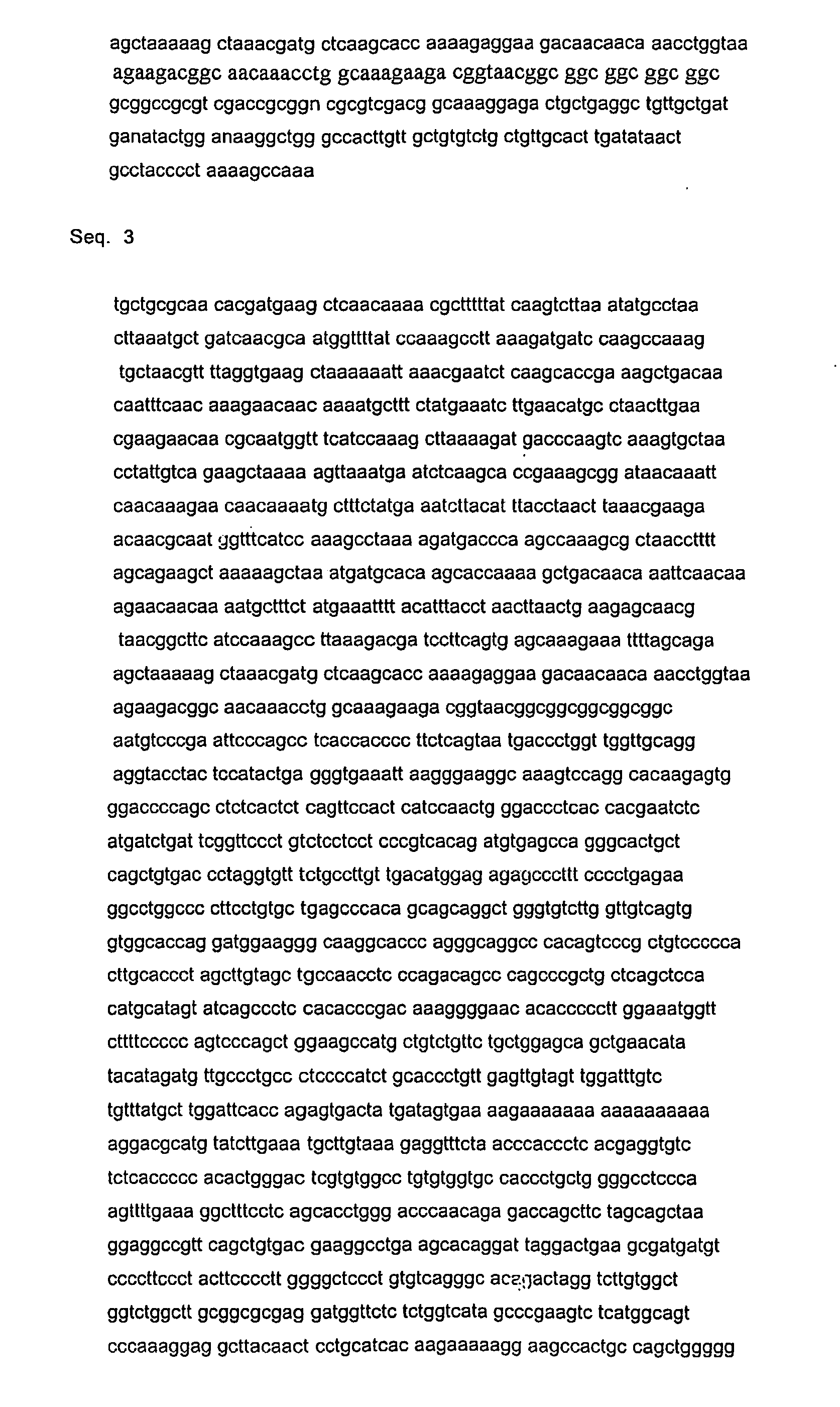Cherkasky fusion proteins containing antibody-, antigen- and microtubule-binding regions and immune response-triggering regions
a technology of fusion proteins and mitosis inhibitors, applied in the field of tumor physiology and biotechnology, can solve the problems of toxic mitosis inhibitors, compound will not be used therapeutically, and the problem of problematic therapeutic us
- Summary
- Abstract
- Description
- Claims
- Application Information
AI Technical Summary
Problems solved by technology
Method used
Image
Examples
example 1
[0071] Cloning and Expression of the Fusion Construct N-IL-15-L-Gephyrin-Fe-C cDNA for gephyrin will be cloned with PCR or human gephyrin (GPH) mRNA will be cloned through RT-PCR. The data for GPH mRNA sequence are available by the National Center for Biotechnology Information, NIH, Bethesda, Md., 20 894, USA as well as they are to find on the internet page of NCBI (http: / / www.ncbi.Nlm.nih.gov).
[0072] The IL-15 mRNA as well as Fc of IgG mRNA will be also cloned using RT-PCR.
[0073] The fusion protein will be constructed from PCR products. The PCR primers are so constructed, that they possess restriction sites on 5′ and 3′ ends for further carry out of ligation steps. The 5′ and 3′ ends of the IL-15 PCR product contain Bam HI and Hind III restriction sites. The 5′ and 3′ ends of the Gephyrin-PCR-product contain Eco RI and Kpn I restriction sites and the 5′ and 3′ ends of the Fc-PCR product contain Pst I and Sac I restriction sites.
[0074] The ligation of the IL-15, Gephyrin and Fe s...
example 2
[0078] Cloning and Expression of the Fusion Construct SPA-5G-Gephyrin cDNA for gephyrin will be cloned using PCR, the human gephyrin (GPH) mRNA will be cloned using RT-PCR. The data for the mRNA GPH sequence can be obtained in the internet, by the National Center for Biotechnology Information, NIH, Bethesda, Md., 20 894, (http: / / www.ncbi.nlm.nihgov:zo / entez / . . . eotide . . . ).
[0079] cDNA for SPA ligated with the primer encoding the Five-Glycine-Space will be also cloned using PCR.
[0080] The fusion protein will be constructed from the PCR products. The PCR-primes are constructed, that they contain restriction sites on 5′ and 3′ ends for further carry out of ligation steps.
[0081] The 5′ and 3′ ends on the gephyrin PCR-product contain Barn HI and Hind III restriction sites. The 5′ and 3′ ends of the SPA-PCR product contain XmnI and Bg III restriction sites. After amplification and purification, the PCR products will be ligated or inserted into PCR H vectors.
[0082] Positive clones...
PUM
| Property | Measurement | Unit |
|---|---|---|
| pH | aaaaa | aaaaa |
| pH | aaaaa | aaaaa |
| pH | aaaaa | aaaaa |
Abstract
Description
Claims
Application Information
 Login to View More
Login to View More - R&D
- Intellectual Property
- Life Sciences
- Materials
- Tech Scout
- Unparalleled Data Quality
- Higher Quality Content
- 60% Fewer Hallucinations
Browse by: Latest US Patents, China's latest patents, Technical Efficacy Thesaurus, Application Domain, Technology Topic, Popular Technical Reports.
© 2025 PatSnap. All rights reserved.Legal|Privacy policy|Modern Slavery Act Transparency Statement|Sitemap|About US| Contact US: help@patsnap.com



